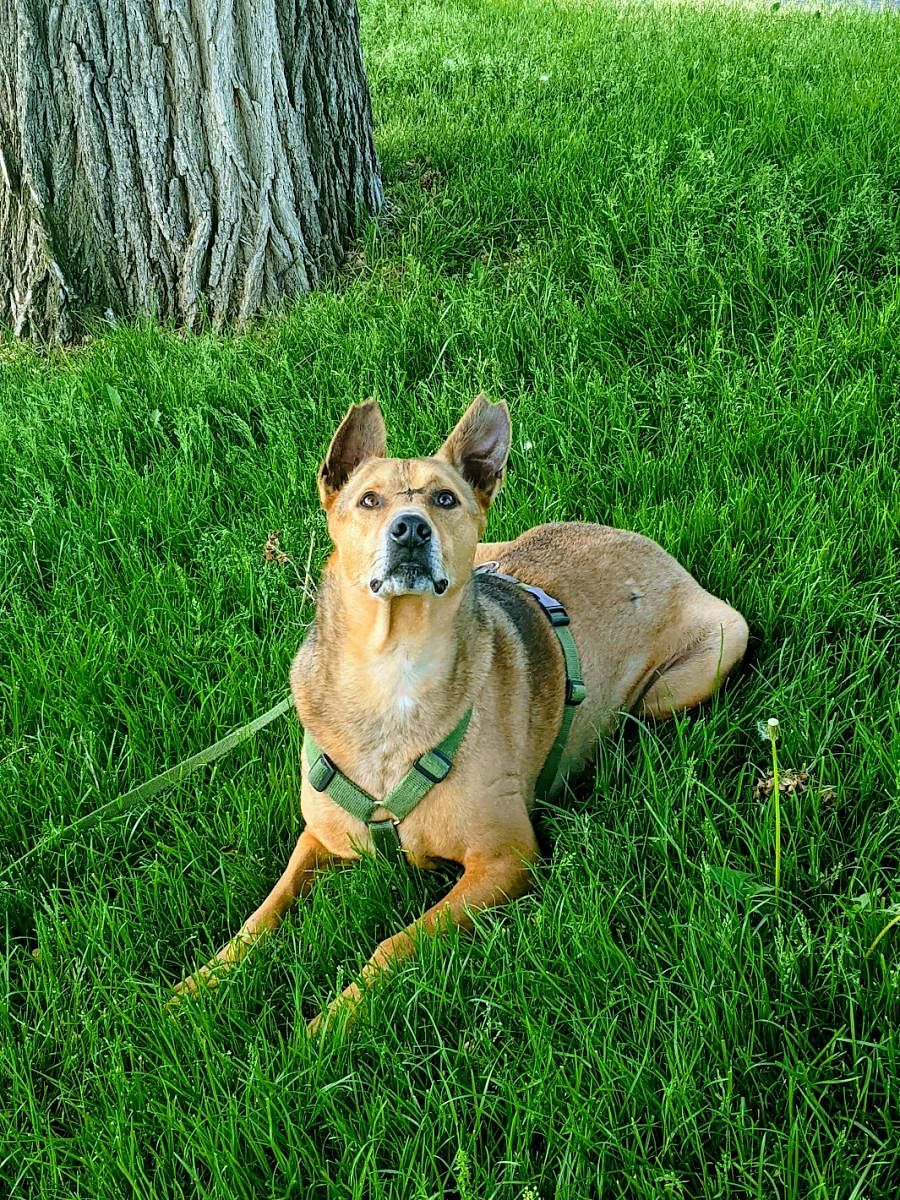
In the June column of Tailspin (dated 12 June, 2022), I wrote about every pet parents’ nightmare — our pets getting lost — and how being prepared for such a day can prevent possible heartache. Well, Wednesday two weeks ago was that damned day for us. Pippi took off after a rabbit and had a nerve-wracking adventure, and our preparations were put to test.
It’s almost winter here, and the days are getting shorter. By 4:30 pm, twilight rings in. The grass in our neighbourhood park is turning brown and the trees are bare. Fallen leaves and broken twigs carpet the ground. The frigid air sends everything in the park on a long snooze. The only exceptions seem to be the cleverly camouflaged eastern cottontails, a type of rabbit, who are busy stocking up their burrows before the long freeze.
On that fateful evening, Pippi was out on his evening walk with my husband. About 15 minutes into it, my phone rang. That’s odd, I thought and picked up. The voice on the other side was in a panic: Pippi took off after a bunny and he’s nowhere to be seen, my husband uttered. Sitting about 3,500 kilometres away, my heart skipped a beat. I was sure he was somewhere around, and that he’d come back soon — he always did. I asked my husband to calm down, and wait to hear his clinking licence plate — our only cue to his presence in a landscape where Pippi’s brown and black fur effortlessly blends in. Ten minutes pass and Pippi makes a guest appearance only to run again in his pursuit of the rabbit. Twenty minutes pass. Now no sight of our boy.
That’s when I realised something’s up. It’s dark and cold, and the perfect time for coyotes to venture out. My husband, still panicky, looked around Pippi’s favourite hangouts with no luck. He began walking home to get some treats and requested Pippi’s friends’ parents — the only people having good reasons to walk on a cold evening — to keep an eye out — and they gladly obliged.
Another 15 minutes pass and the eerie night has no rattling metal sound and no sparkling eyes in the dark. It was time for me to look for my saved list of lost and found pet groups on Facebook. I frantically made a post describing Pippi, when and how he went missing and whom to call if anyone spotted him.
The statistics for finding him were stacked against us: In the US, for example, about a third of pets go missing in their lifetimes, and only one in five are found alive. I was hoping against hope.
About an hour into this kerfuffle, we get a call from a girl that she and her dad found Pippi close to a traffic-riddled street, trying to pull down a fence.
They took Pippi in their car, and he’s now about a 30-minute car ride from where he went missing. She found the contact details, she said, in the tag around Pippi’s harness. When my husband went there to pick him up, our boy had “oops’’ written all over his face, and his eyes seemed all confused. He came running to the only person he knew around, and jumped up for some reassuring pets. After profusely thanking the saviours, Pippi and his dad made their way home — safe and sound —restoring faith in our plans to face days like these. It was a happy ending for all.
But, a question lingered in my mind — what drives Pippi to go on potentially dangerous adventures instead of finding comfort at home or in the safety of a leash? I’ll blame that instinct on dopamine, a neurotransmitter in his (and our) tiny brain. It makes chasing rabbits or squirrels a pleasure-seeking activity for him.
Oh, there’s also a contribution from the remnant genes of his wolf ancestors. In the wild, carnivores rely on this dopamine-induced instinct to chase and hunt anything that runs, which is what puts dinner on their table. Dopamine is also incredibly addictive, so Pippi loves to do it over and over again. If there is a way I could train him out of this habit, I’d probably have an anti-addiction treatment at hand. But, I don’t!
Instead, my learning about dogs and brains tells me to not play fetch to feed into the addiction and move away if I spot the trigger before he does. On days we can, we slow down our walks, indulge in plenty of sniffing, and just sit in a corner of the park looking at what’s around us — a calming activity for Pippi and us.
On other days, we try not to expose him to stressful triggers (waste collection trucks, unknown dogs or speeding motorbikes) that add cortisol to the medley of chemicals in his brain. And for the most part, we rely on his good-fitting harness, strong leash, a licence tag with our phone numbers, and his ability to make decisions that aren’t blurred by the chemicals in the brain. But hey, what’s life without a little adventure?
Tailspin is your monthly column on everything that’s heartwarming and annoying about pet parenting.
The writer is a science communicator and mom to Pippi, a five-year-old rescued Indie, who is behind her drive to understand dogs better. She tweets @RamanSpoorthy